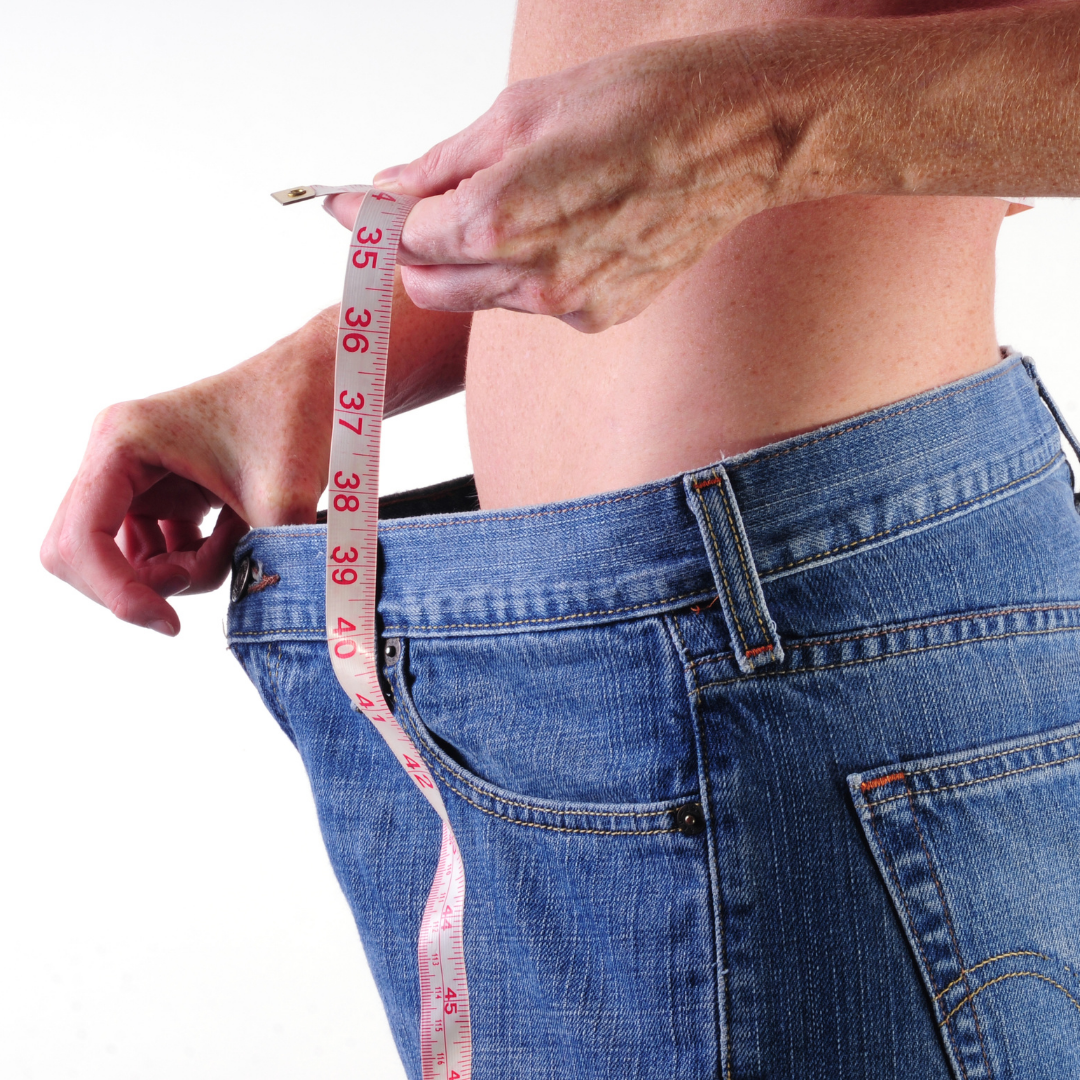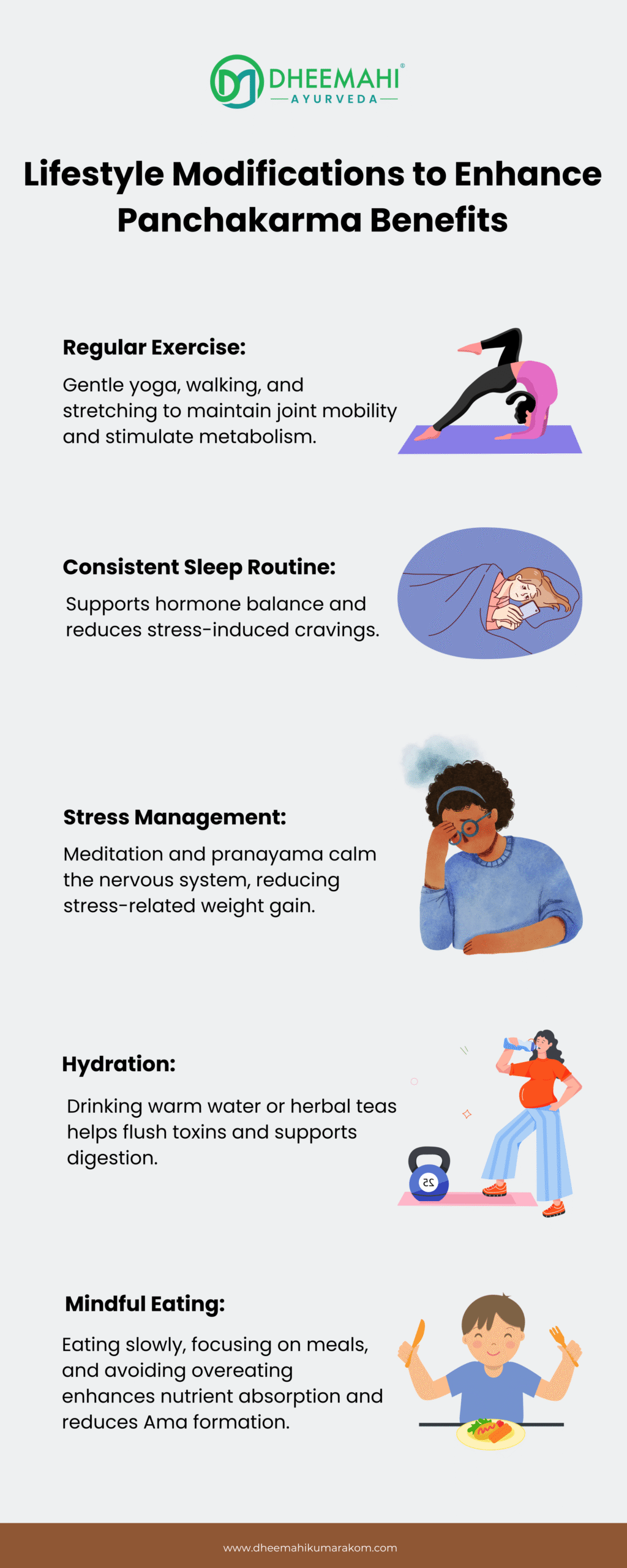How Panchakarma Cleanses Your Body and Kickstarts Weight Loss Naturally
Weight management is one of the most discussed health topics today. Busy lifestyles, processed foods, sedentary habits, and stress have led to a global increase in obesity and metabolic disorders. While fad diets and extreme workout plans promise quick results, their long-term sustainability is often limited. For natural, holistic, and lasting weight management, Ayurveda offers effective strategies that work with your body’s innate balance.
Among these, Panchakarma, the ancient detoxification and rejuvenation therapy of Ayurveda, is increasingly recognized as a safe, natural, and highly effective approach to weight loss. This article explores how Panchakarma for weight loss works, its scientific rationale, the process involved, and lifestyle strategies to support lasting transformation.
Understanding Panchakarma and Its Role in Weight Management
Panchakarma translates to “five actions” in Sanskrit, referring to the five therapeutic procedures designed to remove accumulated toxins (Ama) from the body and restore dosha balance (Vata, Pitta, and Kapha). In Ayurveda, excessive weight and obesity are often linked to Kapha imbalance, slow metabolism, and accumulation of Ama due to improper digestion and lifestyle choices.
The central idea is simple: when your digestive fire (Agni) is weak, your body cannot process nutrients efficiently. Undigested food turns into toxins (Ama) that accumulate in tissues, particularly fat, and lead to weight gain. Panchakarma detoxifies the system, strengthens Agni, and stimulates fat metabolism, providing a natural foundation for sustainable weightloss.
The Science Behind Panchakarma for Weight Loss
Modern research validates some principles of Panchakarma for metabolic health. Panchakarma therapies:
- Stimulate circulation,improving blood flow to tissues.
- Support lymphatic drainage, which helps eliminate metabolic waste.
- Enhance digestive efficiency, by reducing Ama and improving enzyme function.
- Reduce systemic inflammation, which is often linked to obesity and insulin resistance.
- Reduction in Fluid Retention, helping the body flush out excess water and toxins. This not only eases bloating but also restores lightness and vitality, making you feel naturally energetic.
- Hormonal Harmony: Specialized treatments like Nasya and Basti nurture the body’s internal balance by regulating key hormones such as insulin and cortisol. When these hormones are stable, appetite becomes steady, cravings reduce, mood improves, and you gain better control over weight and eating patterns.
By improving metabolic efficiency and addressing toxin accumulation, Panchakarma creates an optimal environment for the body to burn fat naturally, without harsh medications or extreme calorie restriction.
How Panchakarma Works to Kickstart Weight Loss
Panchakarma employs a series of cleansing, rejuvenating, and balancing procedures tailored to your body constitution (Prakriti) and health condition (Vikriti). For weight management, the therapy focuses on reducing Kapha and Ama while boosting Agni.
Key Panchakarma Therapies for Weight Loss
1. Abhyanga (Herbal Oil Massage)
-
- A full-body massage with warm, medicated oils.
- Stimulates circulation, loosens stored fat and toxins, and prepares the body for deeper detox.
- Supports lymphatic drainage and boosts metabolism.
2.Swedana (Therapeutic Steam Therapy
-
- Induces sweating to remove water retention and toxins through the skin.
- Opens channels (Srotas), enhancing nutrient absorption and fat metabolism.
3. Virechana (Therapeutic Purgation)
-
- Eliminates Pitta-related toxins from the digestive tract.
- Helps regulate metabolism and reduce fat accumulation in the liver and intestines.
4. Basti (Medicated Enemas)
-
- Nourishes tissues and removes Vata-related blockages.
- Detoxifies the colon, improving nutrient absorption and digestion efficiency.
5. Raktamokshana (Blood Purification, if required)
-
- Removes impurities from the bloodstream.
- Reduces inflammation and supports tissue regeneration, indirectly aiding weight management.
These procedures collectively target fat, toxins, and sluggish digestion, helping the body to naturally shed excess weight while rejuvenating energy levels.
The Role of Diet and Digestion in Panchakarma Weight Loss
Panchakarma is not just a series of therapies—it works best when combined with Ayurvedic dietary guidance. Correct diet plays a pivotal role in boosting Agni, reducing Ama, and supporting sustainable weightloss.
Foods to Include
- Warm, easily digestible meals to enhance Agni.
- High-fiber foods such as vegetables, legumes, and whole grains to support digestion and detoxification.
- Lean proteins like mung beans and pulses for tissue nourishment.
- Spices like ginger, black pepper, turmeric, and cumin to stimulate metabolism.
- Herbal teas for digestion and fat metabolism.
Foods to Avoid
- Heavy, oily, and processed foods that promote Kapha accumulation.
- Excess sugary or fried items that hinder digestion.
- Cold or raw foods in excess, which weaken Agni.
A properly guided diet ensures that Panchakarma effects last longer and promotes a natural weight balance.
Lifestyle Modifications to Enhance Panchakarma Benefits
Ayurveda emphasizes lifestyle alongside therapy. Simple habits can amplify the benefits of Panchakarma for weight management:
1. Regular Exercise:
Gentle yoga, walking, and stretching to maintain joint mobility and stimulate metabolism.
2. Consistent Sleep Routine:
Supports hormone balance and reduces stress-induced cravings.
3. Stress Management:
Meditation and pranayama calm the nervous system, reducing stress-related weight gain.
4. Hydration:
Drinking warm water or herbal teas helps flush toxins and supports digestion.
5. Mindful Eating:
Eating slowly, focusing on meals, and avoiding overeating enhances nutrient absorption and reduces Ama formation.
Integrating these habits transforms Panchakarma from a short-term detox into a long-term weightloss lifestyle strategy.
Panchakarma for Different Body Types (Prakriti)
Ayurveda recognizes that weight issues manifest differently based on your Prakriti. Panchakarma therapies are therefore personalized:
-
Kapha-Prone Individuals:
Tend to gain weight easily; therapies focus on reducing excess Kapha, stimulating metabolism, and cleansing fat deposits.
-
Vata-Prone Individuals:
May struggle with irregular digestion; therapies nourish tissues, regulate bowel function, and improve fat metabolism.
-
Pitta-Prone Individuals:
Excess heat may cause inflammation; therapies focus on cooling, detoxifying, and restoring balance for sustainable weight control.
This individualized approach ensures maximum efficacy, minimizing side effects or rebound weight gain.
Benefits of Panchakarma Beyond Weight Loss
While panchakarma for weight loss is highly effective, the therapy offers multiple systemic benefits:
1. Detoxification of the Body:
Removes metabolic waste and improves organ function.
2. Enhanced Digestion:
Restores digestive fire and nutrient absorption.
3. Reduced Inflammation:
Helps combat obesity-related inflammation naturally.
4. Improved Energy and Vitality:
Rejuvenates tissues and improves circulation.
5. Hormonal Balance:
Supports endocrine function, which influences weight regulation.
6. Mental Well-Being:
Reduces stress, improves focus, and enhances mood, indirectly supporting healthy lifestyle choices.
By addressing both the physical and mental aspects, Panchakarma offers a holistic solution to sustainable weight management.
Scientific Insights on Panchakarma and Weight Loss
Recent studies suggest that Panchakarma procedures improve metabolic health and reduce body weight in obese individuals. By targeting systemic toxins, enhancing digestion, and balancing doshas, Panchakarma aligns with modern concepts of detoxification, anti-inflammatory interventions, and metabolic optimization.
Researchers note improvements in:
- Lipid metabolism and cholesterol levels
- Blood glucose regulation
- Body fat reduction and lean mass preservation
These findings demonstrate that Ayurvedic detoxification is not merely traditional practice but also a scientifically credible method for weight management.
Panchakarma and Long-Term Weight Management
Unlike fad diets or aggressive workout plans that produce temporary results, Panchakarma creates sustainable metabolic changes:
- Eliminates accumulated toxins that interfere with fat metabolism.
- Strengthens digestive fire for long-term control of weight gain.
- Instills mindful dietary and lifestyle practices.
- Reduces stress and hormonal imbalances contributing to weight gain.
Combining Panchakarma with continued dietary awareness, exercise, and stress management ensures that weight reduction is natural, healthy, and lasting.
Who Can Benefit from Panchakarma for Weight Loss
Panchakarma is suitable for individuals who:
- Struggle with chronic obesity or weight gain despite diet and exercise.
- Have sluggish digestion or irregular metabolism.
- Suffer from metabolic disorders such as prediabetes, insulin resistance, or high cholesterol.
- Experience fatigue, lethargy, or low immunity due to toxin accumulation.
- Seek a natural, side-effect-free, holistic weight management approach.
However, it should be performed under the guidance of a trained Ayurvedic practitioner to ensure personalization, safety, and optimal results.
Conclusion:
Weight management is more than just a cosmetic goal. It is central to long-term health, energy, and vitality. Panchakarma for weight loss offers a holistic approach that targets the root causes of weight gain such as improper digestion, Ama accumulation, and dosha imbalance while supporting metabolism, reducing inflammation, and improving overall wellness.
At Dheemahi Ayurveda Village, Panchakarma is combined with detoxifying therapies, Ayurvedic herbal support, personalized diets, and mindful lifestyle practices to help individuals achieve natural, sustainable, and long-lasting weight reduction. Unlike quick-fix diets or extreme exercise regimes, this authentic approach works in harmony with your body, restoring balance and promoting health from within.
For those struggling with weight issues and seeking a side-effect-free, holistic solution, Dheemahi Ayurveda Village offers an evidence-based, traditional, and highly effective method for kickstarting weight loss and achieving lasting transformation.
Begin your journey to wellness with expert guidance in holistic Ayurvedic care, tailored treatments, and natural healing solutions
How Our Booking Process Works
The unique approach involves a series of discussion during your initial decision-making process to make sure that we will be able to match your expectations with our treatment.
Based on the discussions with you our team of expert doctors will design the best treatment package personalized for your needs.
01
Consultation Form
Fill out our consultation form, and let us know when will you be available for our doctor to talk to you
02
Discussion with Doctor
Discuss your health condition and expectations with our doctor.
03
Booking Confirmation
Confirm the booking by making a payment of 50% advance.
Consultation Form
Submit this form to initiate a booking with us
Have any queries? We will help you. Talk to us now
Say Goodbye to Health Woes & Hello to Healthy Living
Dheemahi Ayurvedic Pvt Ltd
12/386 Varaputhara Road
Kumarakom, Kerala, India
Pin 686563
Dheemahi Ayurvedic Centre, Near Neelimangalam Bridge, Kumaranaloor, Perumbaikad.P.O, Kottayam, Kerala, India, Pin 686016
Other Treatments
Karkidaka Chikilsa | Ayurvedic Treatment for Depression | How to Reduce Stress Naturally | Autoimmune Disorders | Mental Health Ayurvedic Treatment | Weight-Loss Treatment | Frozen Shoulder Ayurvedic Treatment | Diabetes Ayurvedic Treatment | PCOS Ayurvedic Treatment | Celiac Disease Treatment | ayurvedic treatment for skin diseases | nervous system ayurvedic treatment | Back Pain Ayurvedic Treatment | Cervical Spondylitis Ayurvedic Treatment | ayurvedic treatment for blood sugar | Fatty Liver Ayurvedic Treatment | Knee Pain Ayurvedic Treatment | Migraine Ayurvedic Treatment | Osteoarthritis Ayurvedic Treatment | Psoriasis Ayurvedic Treatment | Sinusitis Ayurvedic Treatment | Ayurvedic Detox Treatment | Migraine Ayurvedic Treatment | Ayurvedic Treatment for Rheumatoid Arthritis | Ayurvedic treatment for joint pain | Ayurvedic treatment for ulcerative colitis | Panchakarma Treatment |


